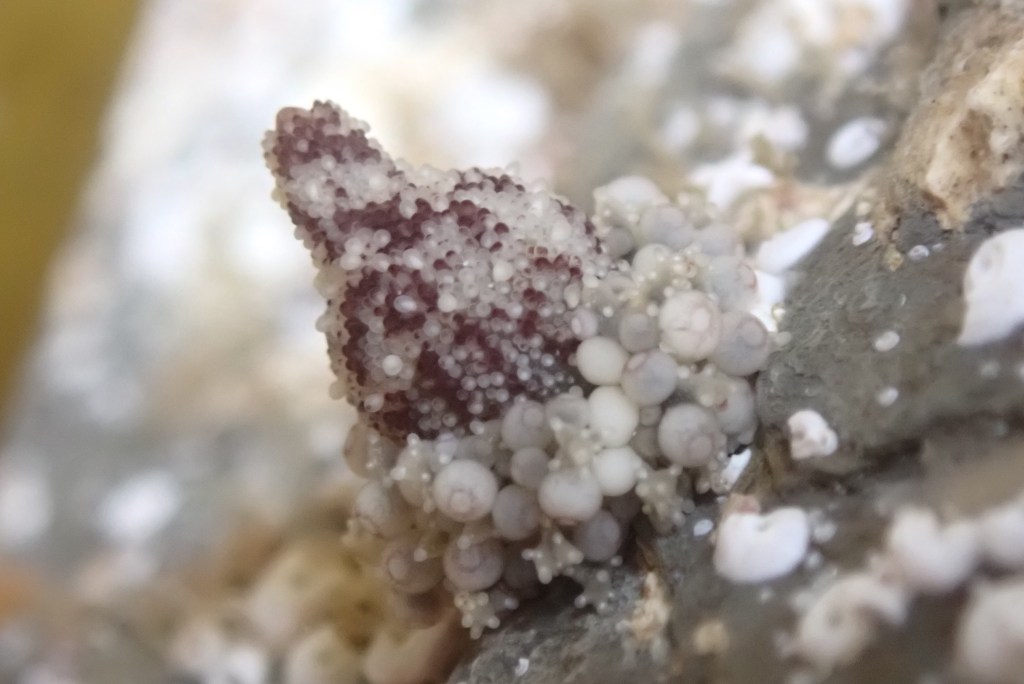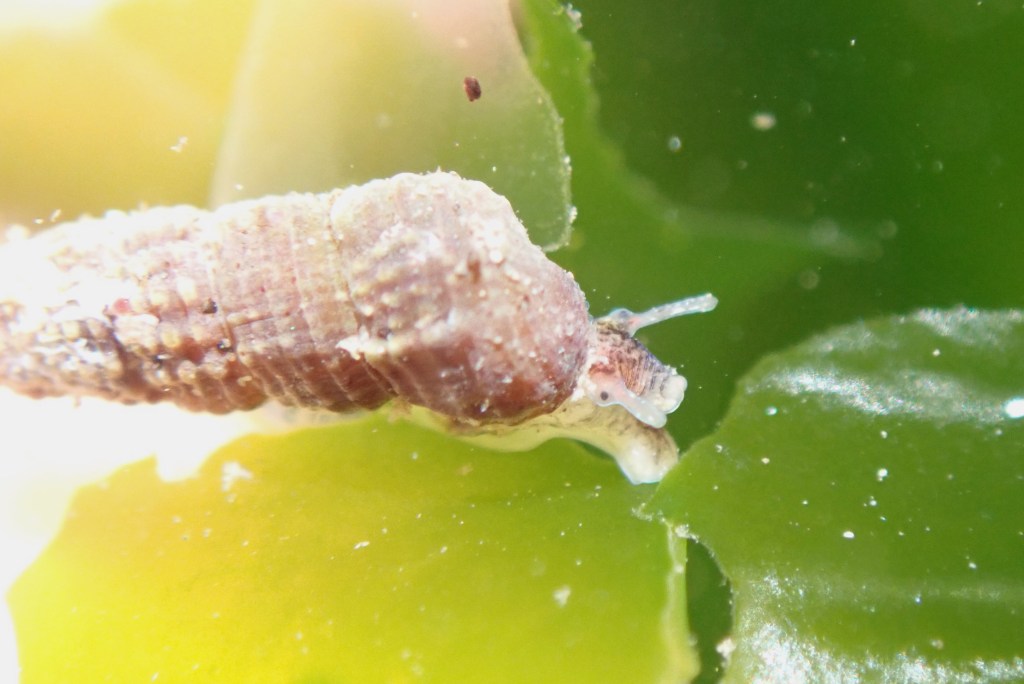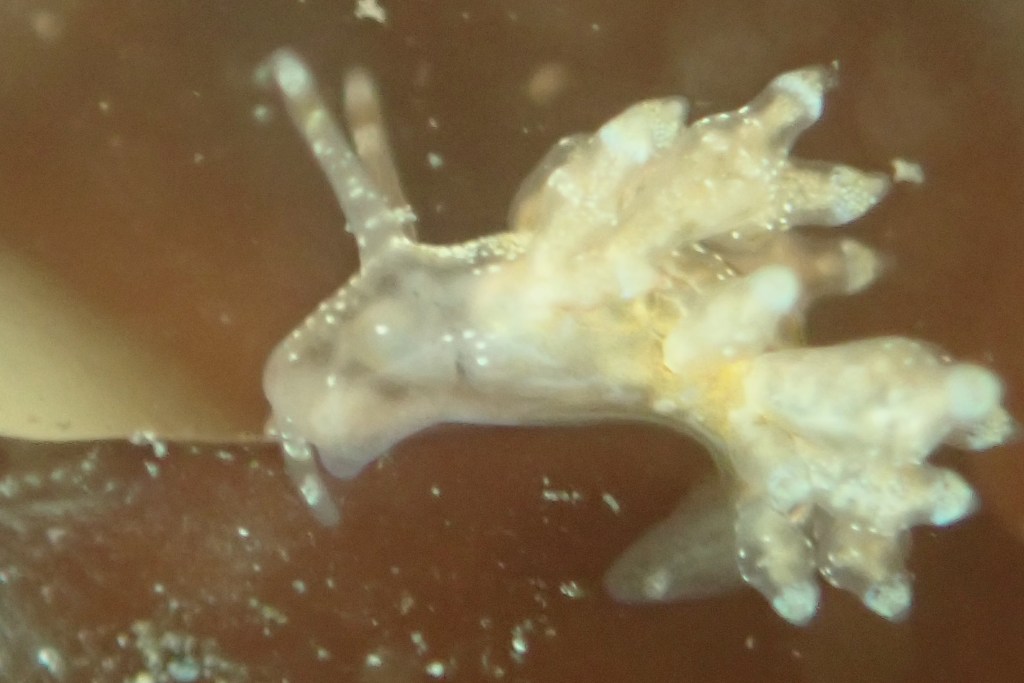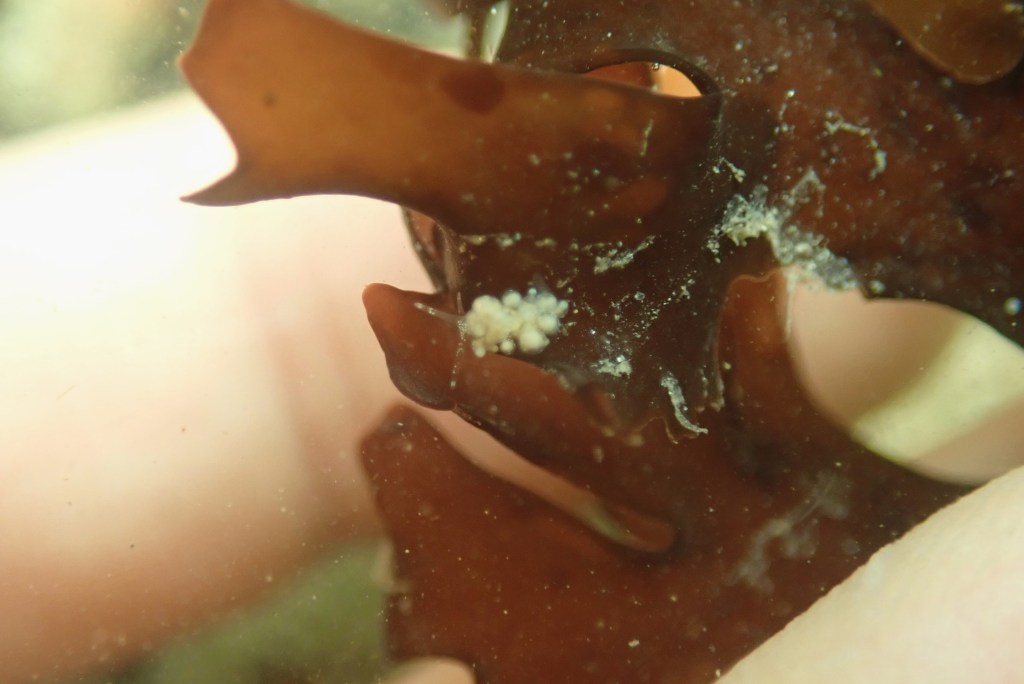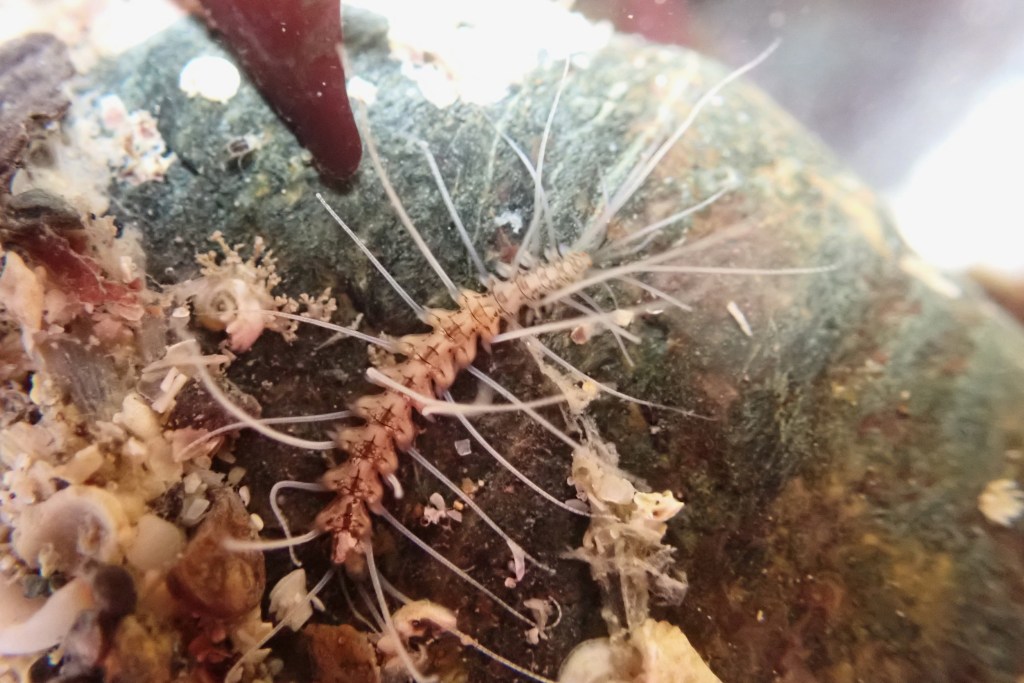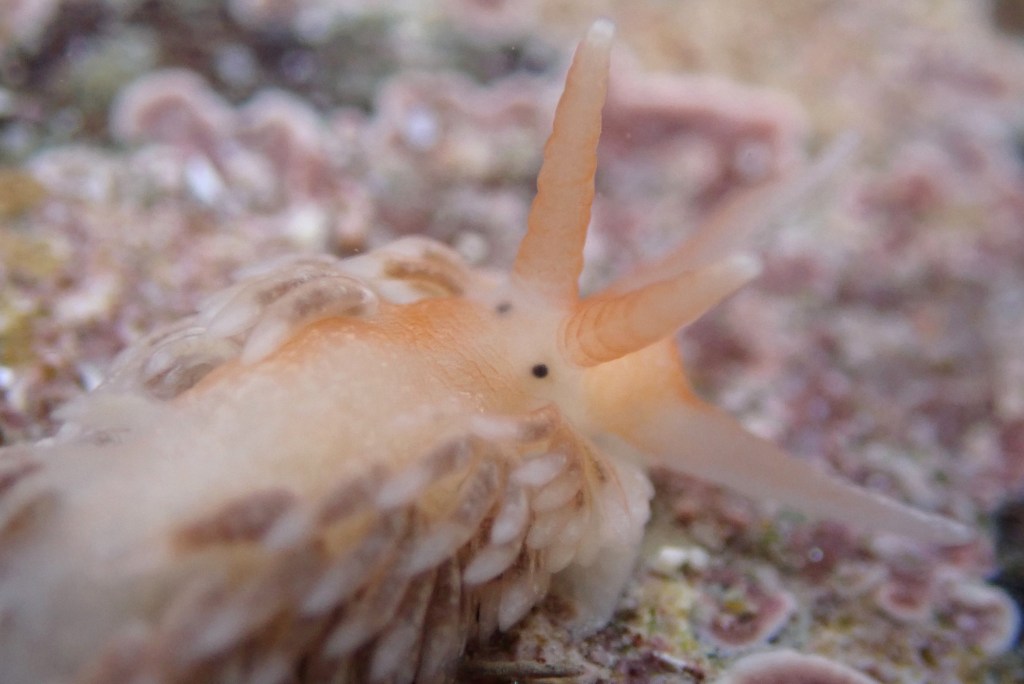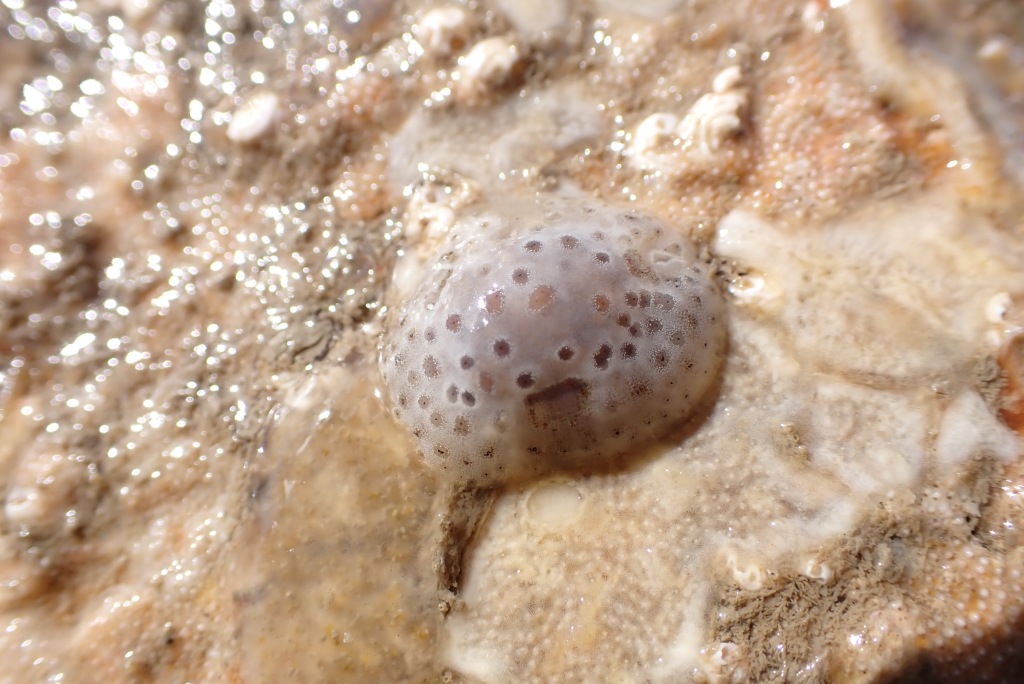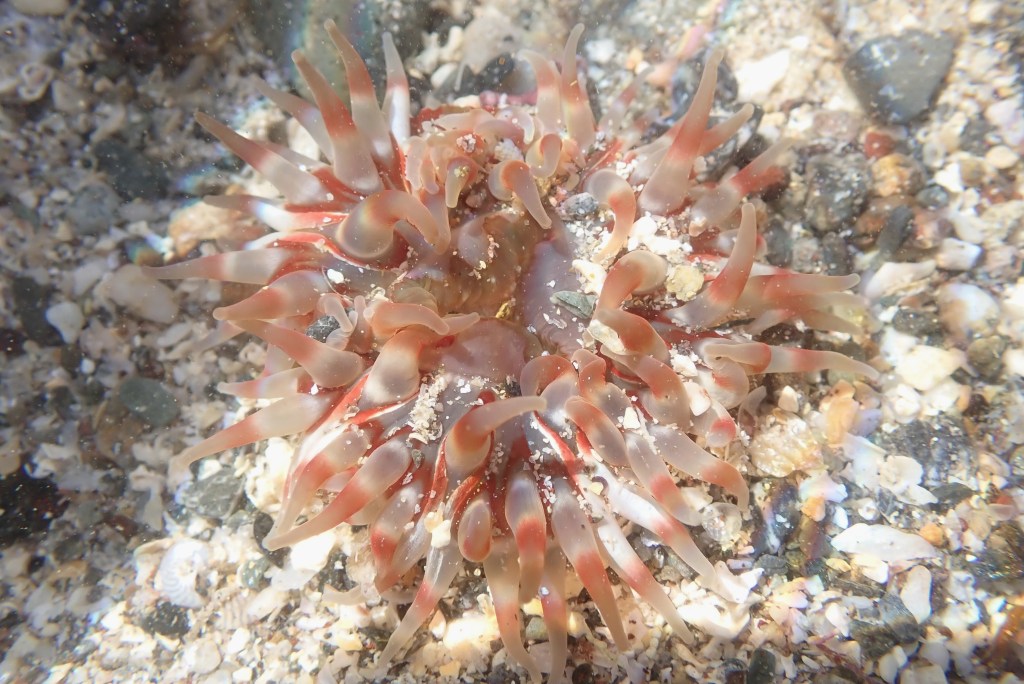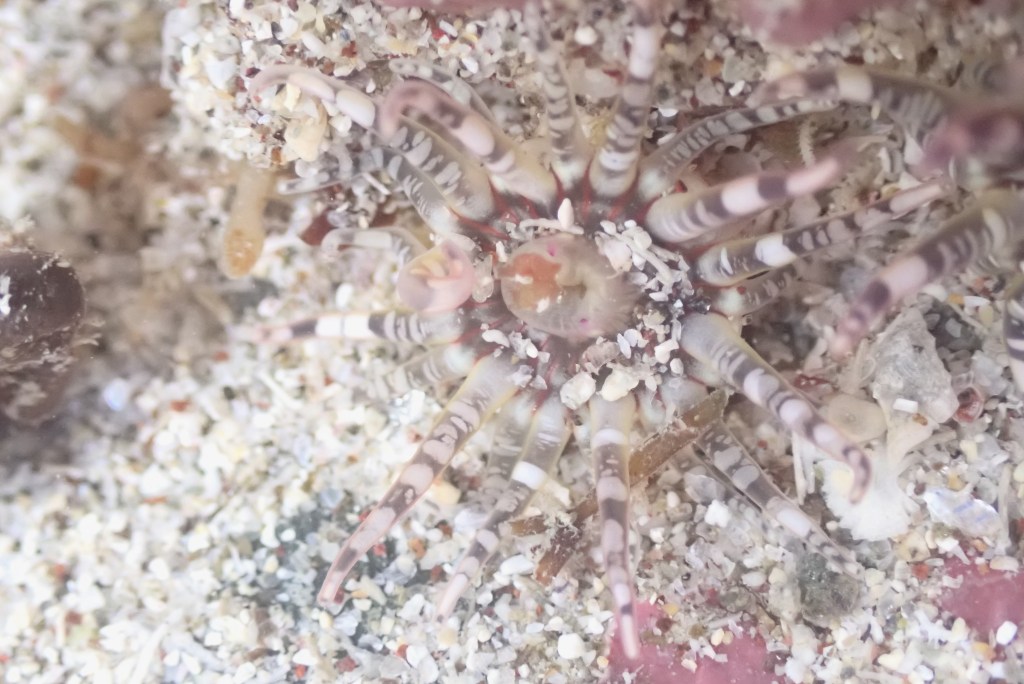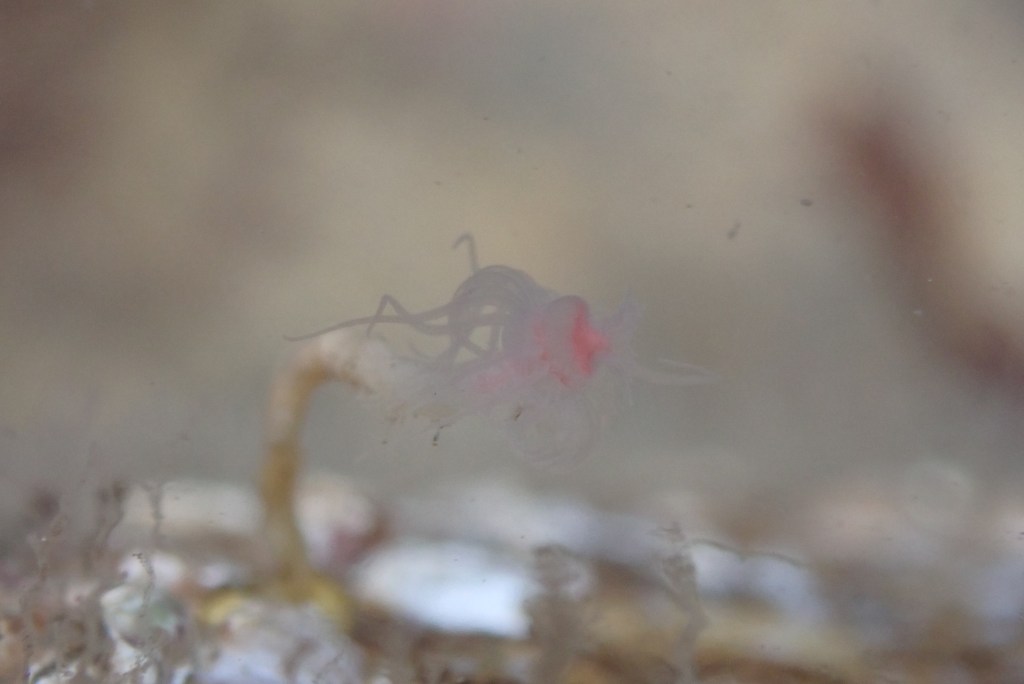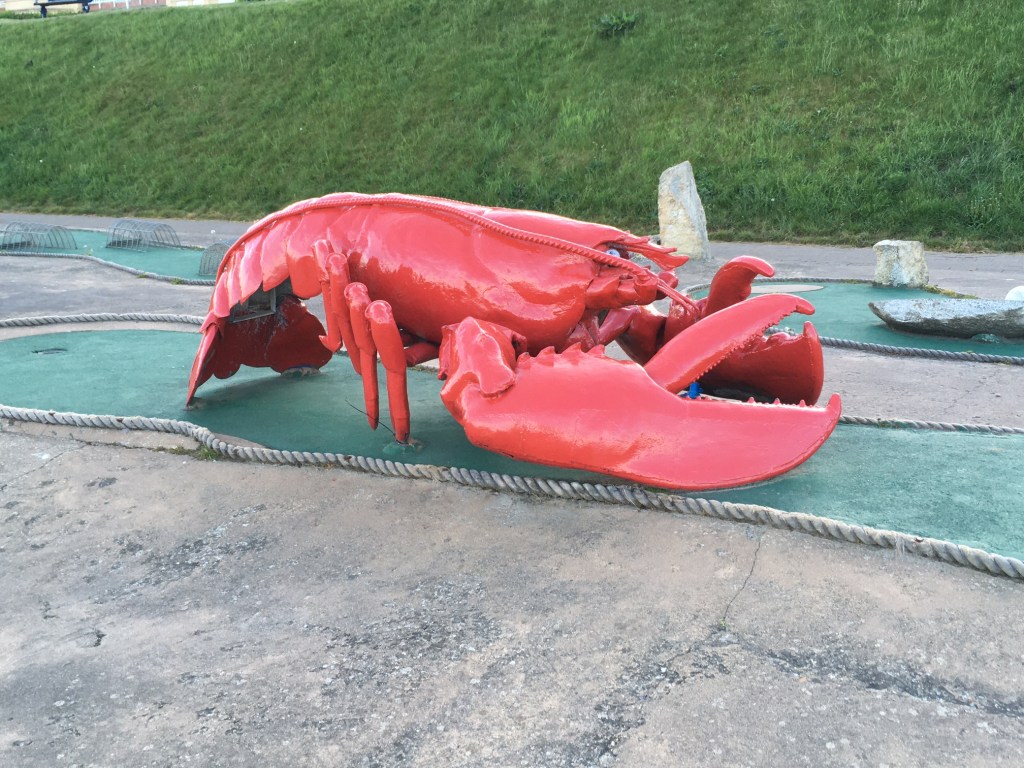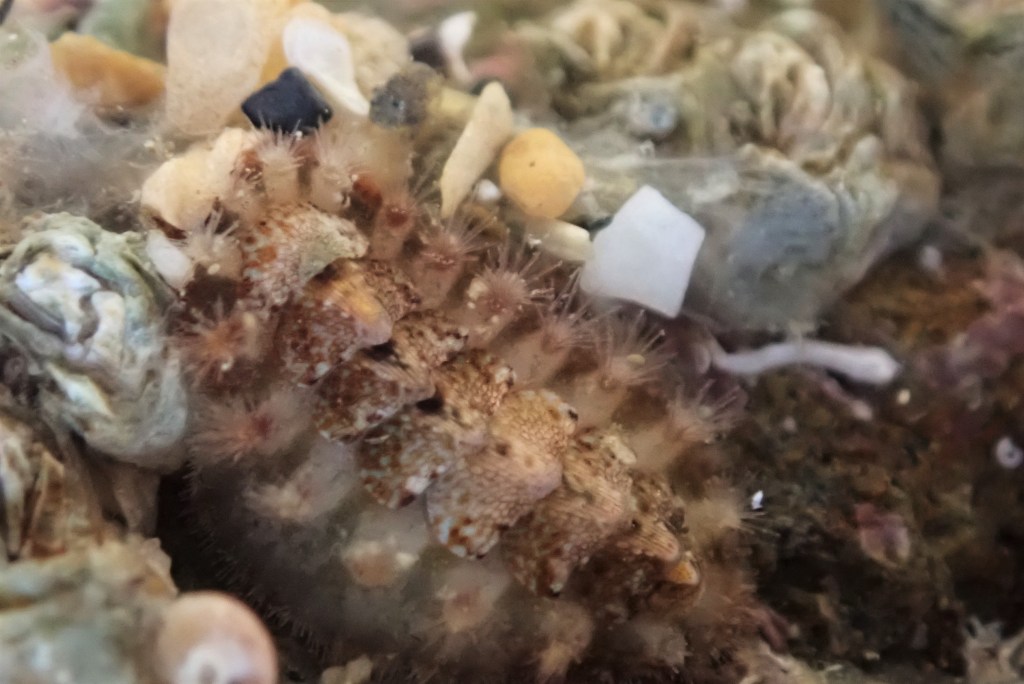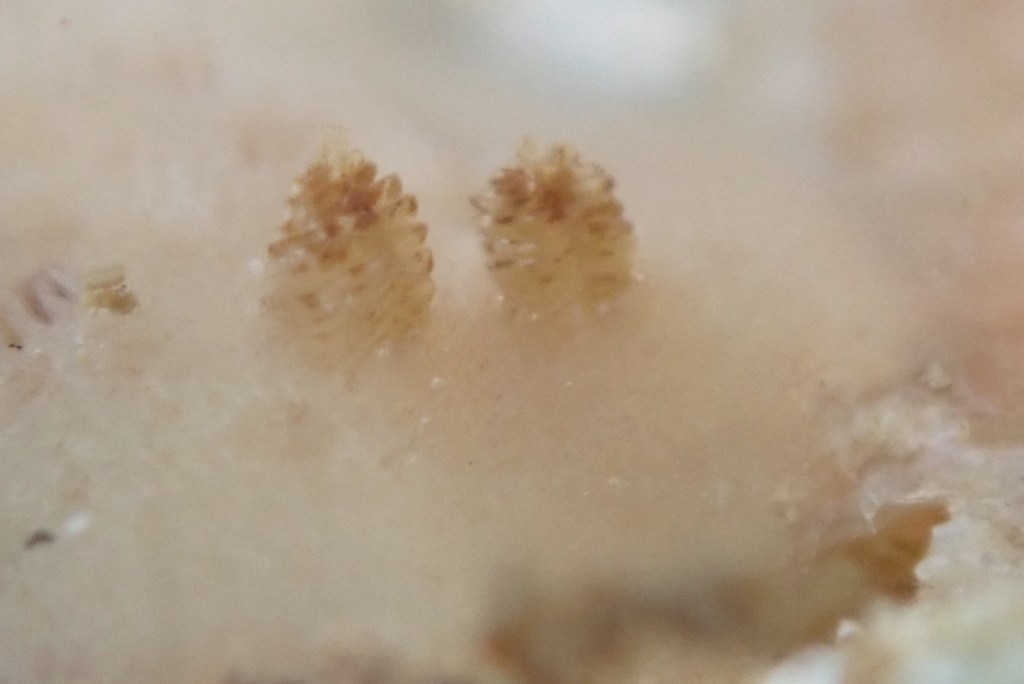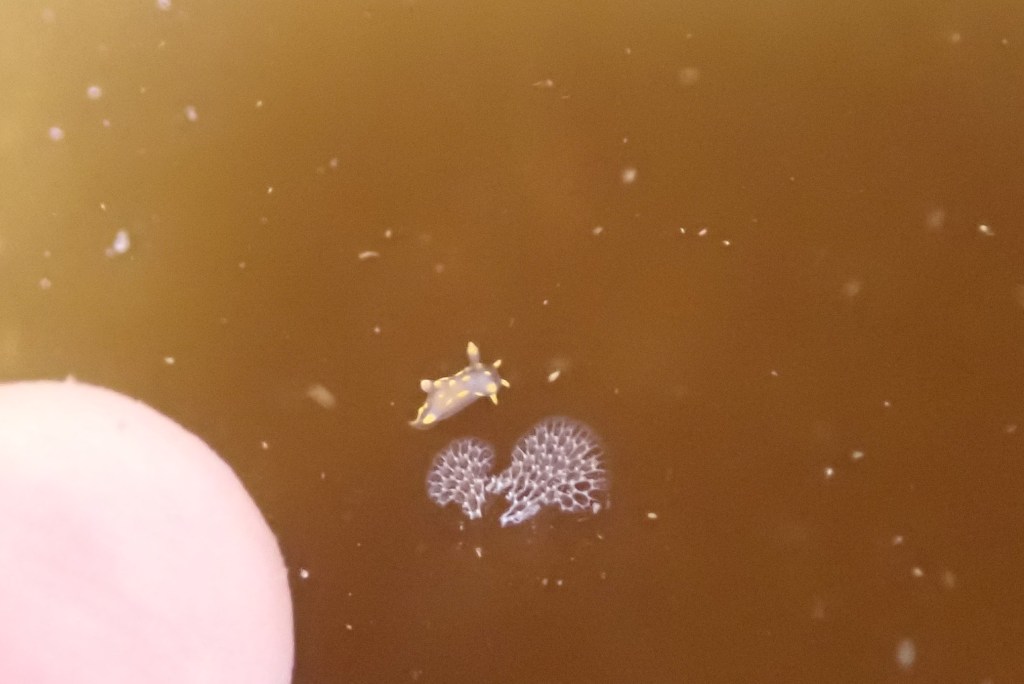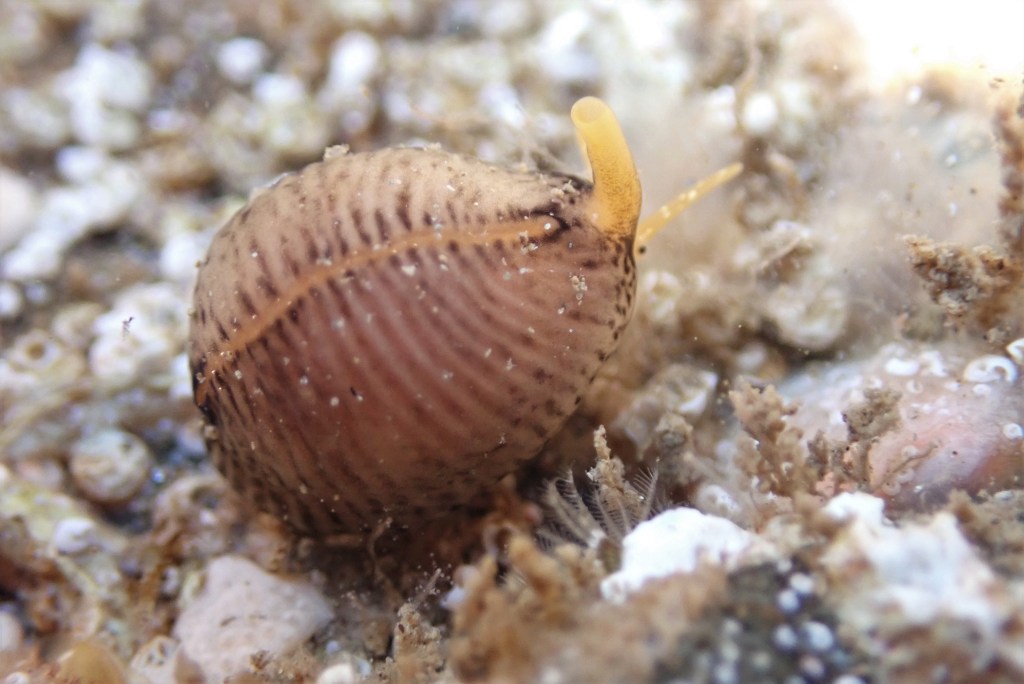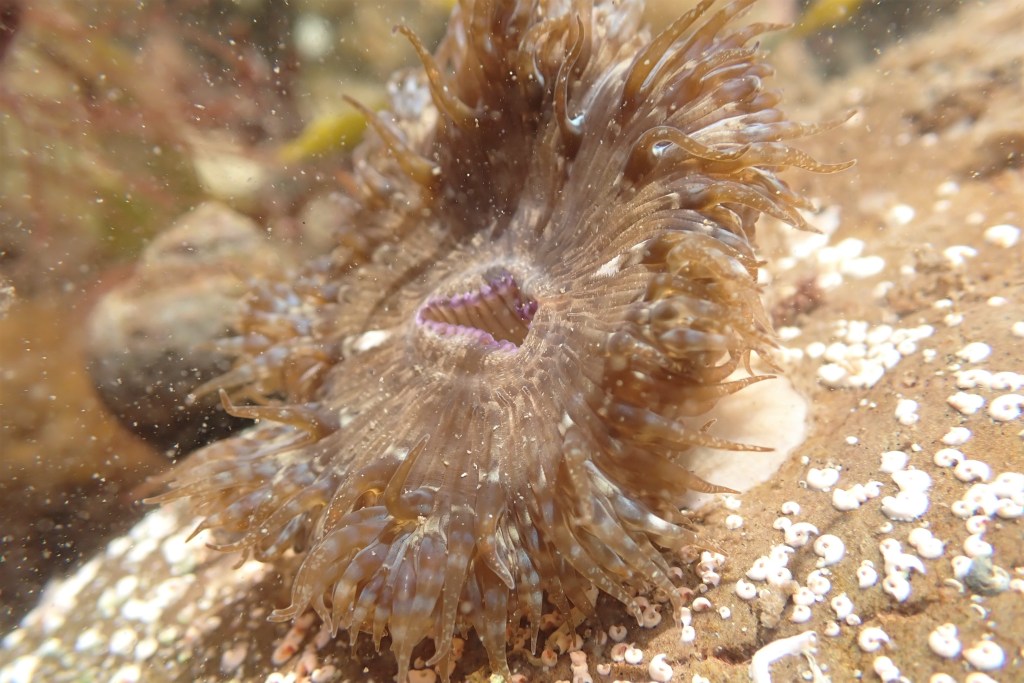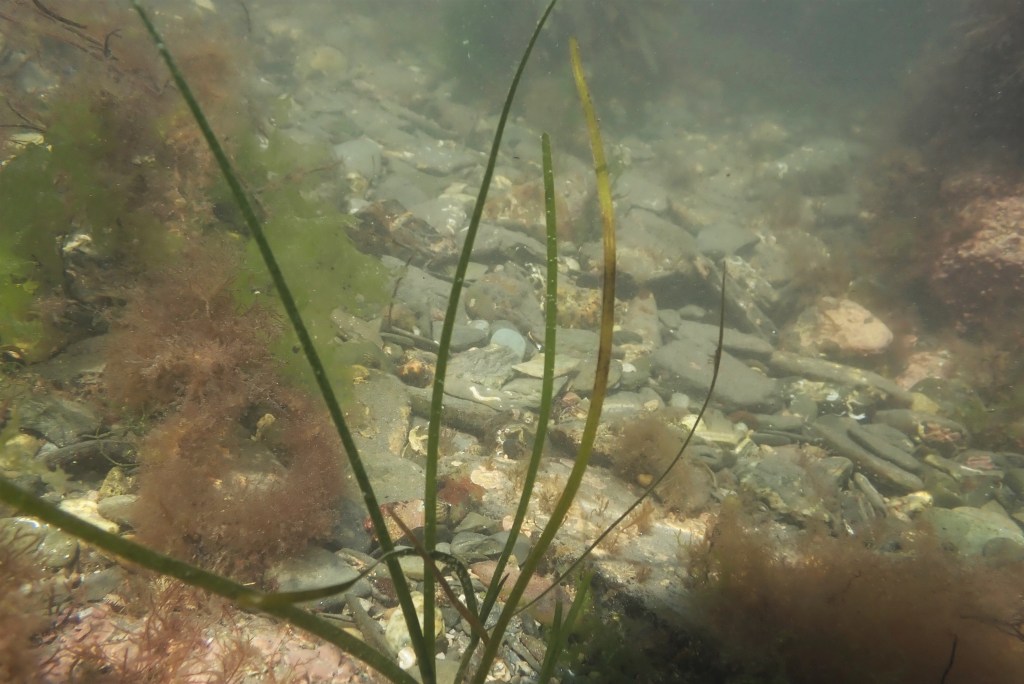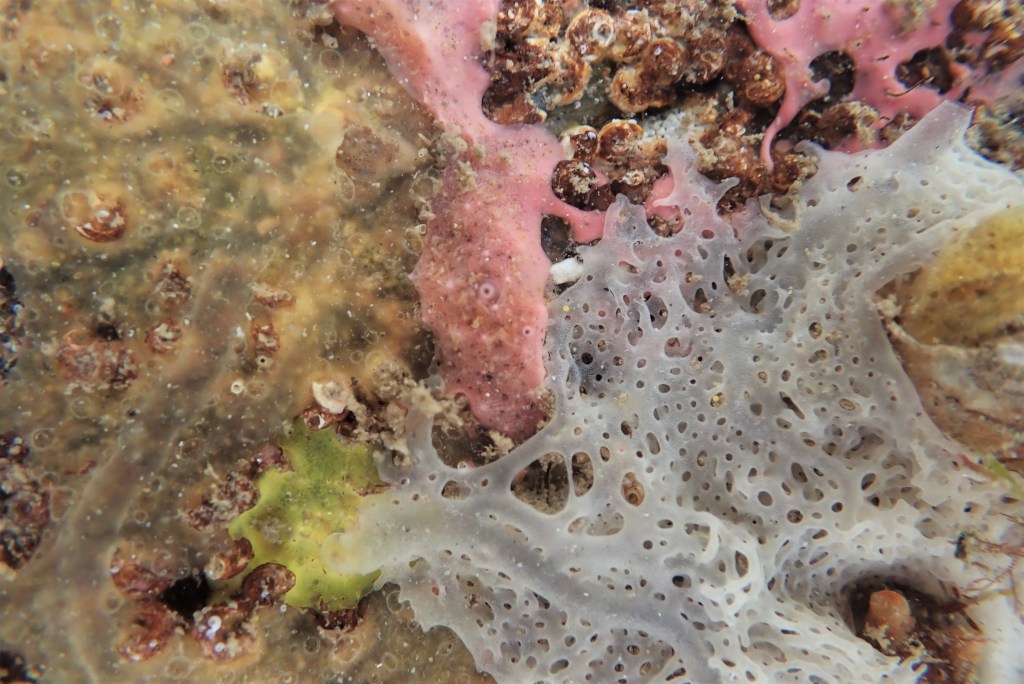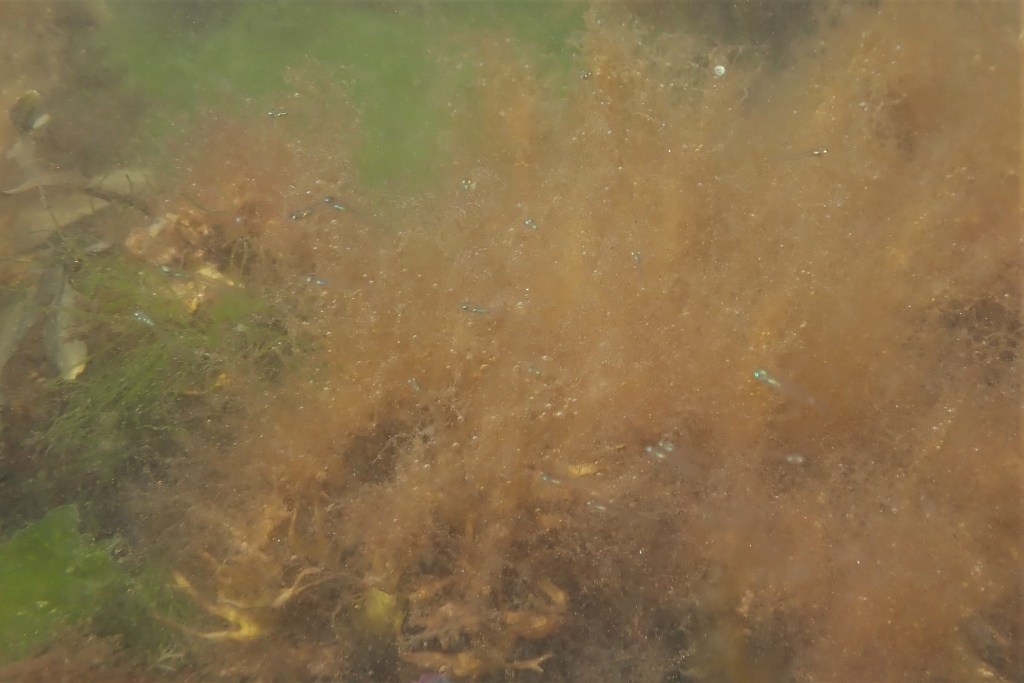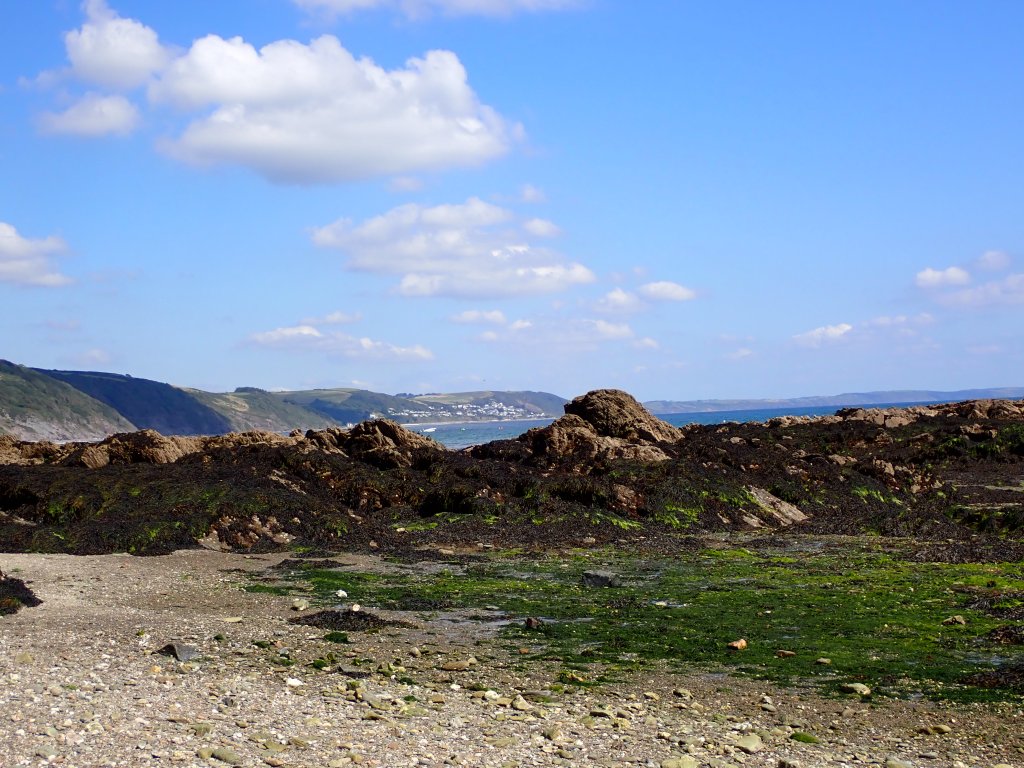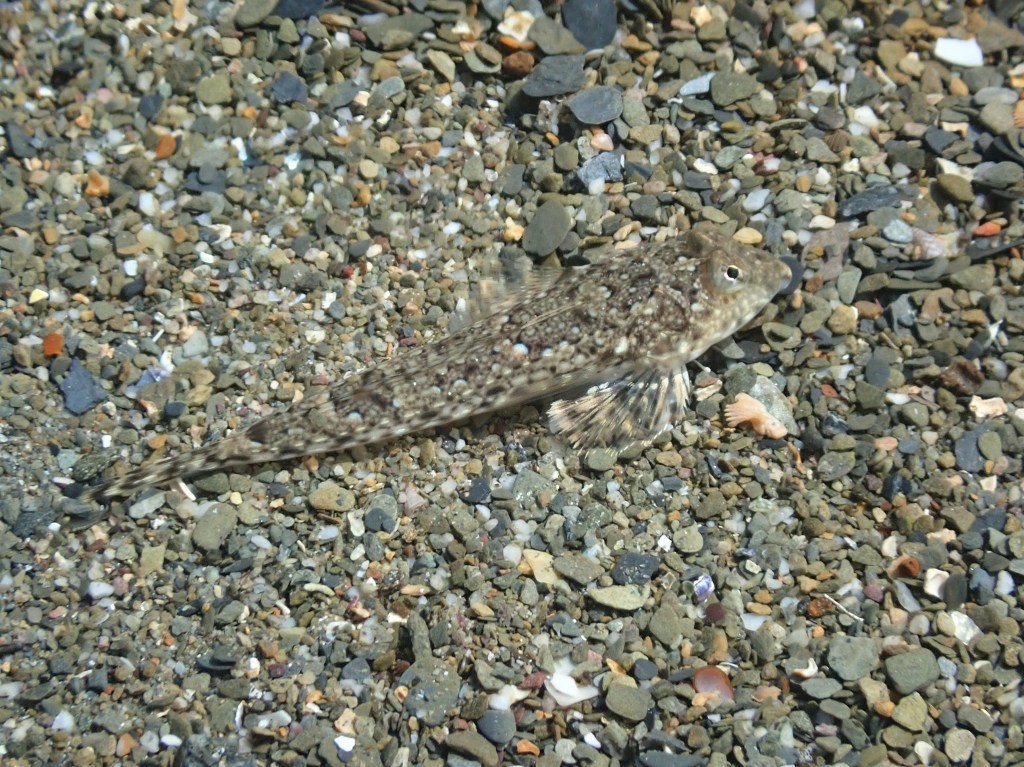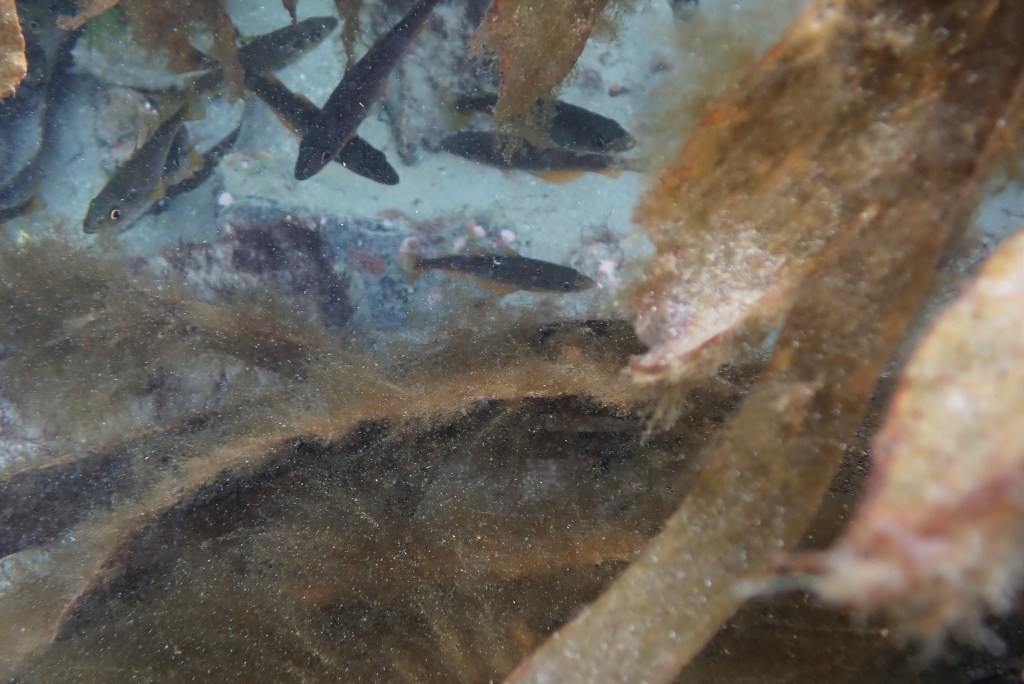It’s been a while since I posted – thank you for bearing with me. I have so many rock pool adventures to share. I hope you will love this rosy feather star as much as I did.
“Do you see many feather stars?” Libbie asks. We’re on a favourite north coast beach, where we randomly first met a few months back. This time, she has brought her sister in law, Lynne, whose joyous rockpooling Twitter feed I highly recommend: lynne (@lynne08777205) / Twitter.
I admit that I have never seen one. Neither have Libbie or Lynne. I am convinced feather stars are somewhere here on this very beach, but it feels as though I’m looking in the wrong way. Perhaps between us, we’ll spot one? We all agree that sometimes you find things just because you have decided to. This, we say, will be our lucky day.
There is plenty to keep us occupied, including some new life. This is good to see after the heat-bleached seaweeds and poor water quality we have experienced around the coast over the summer. Young Montagu’s blennies flit between the rocks and turn their large eyes to watch us. Libbie discovers a juvenile white-ruffed sea slug (Aeolidiella alderi) under a small slate.
Nearby, an even smaller solar powered sea slug, Elysia viridis is out in search of seaweeds to eat. Under my camera, we can see the green and turquoise colours, clues to the presence of chloroplasts from algae it has consumed, which are still photosynthesising – making glucose inside the slug’s body.
While the tide recedes, we take a leisurely look into pools packed with St Piran’s hermit crabs and discuss Lynne’s wishlist for the day (Celtic sea slugs, Scarlet and gold cup corals and blue-rayed limpets). They are all species that don’t move far or fast and conditions are ideal.

Junior, who now knows these rocks as well as I do, sets a course across the slippery stream bed towards an area where we’re almost sure to find everything we’re looking for.
As always, progress is slow. There is so much to see and we can’t resist checking every pool. There are vivid pink painted top shells and all sorts of fish and crabs. To my excitement, we find a species I haven’t noticed before, Perophora listeri – a cluster of small bubble-like sea squirts on the red seaweed.
In a wide pool near to where Junior is searching for Celtic sea slugs, we settle down to look closely at the rainbow wrack. Not only is this bushy seaweed a brilliant iridescent turquoise color and a favourite place for catsharks to lay their eggcases, it is also teeming with life, like a miniature forest.
Pheasant shells roam the canopy, young anemones cling on like epiphytes and the dense animal crust of sponges, sea squirts, hydroids and bryozoans around lower ‘branches’ attracts cowries and other small predators. Pretty Asterina phylactica cushion stars are everywhere and as I look down into the base of the seaweed, something else grabs my attention.
There is a bright pink, branched shape that doesn’t look like seaweed. I crawl in close to get my camera in position, but I already know what it is. “A feather star!” I gasp. It seems ridiculous to find one just because I’m looking, but there it is.
As we watch, the rosy feather star extends and retracts its arms, uncurling them to show the alternating twiggy branches along the sides. These are fringed with a little comb-like structure to catch passing food. The animal is clinging onto the seaweed with its hooked pink-striped “cirri”. It is such a shocking coral pink colour that it seems impossible I would overlook one, but it is well hidden under the seaweed and camouflaged against the crust of pink seaweed and the coral weed that lines the whole pool.
Convinced there must be more feather stars here, I search for a while without success. In the meantime, Junior has found everything on today’s wish list and is keen to show Lynne and Libbie before the tide comes up. Sure enough, we are treated to scarlet and gold cup corals, blue rayed limpets and quite a battalion of Celtic sea slugs!
Soon the oystercatchers are moving up the shore with the tide and it is time to retreat. We sit at the top of the shore, watching kestrels hovering over the clifftop while we enjoy a much-needed picnic. Buoyed by our success with the feather star, we reckon we should carry on actively looking for unlikely things next time. Soon, we have a whole list. Cuttlefish, octopus and seahorses, here we come!
A few more bonus creatures from our day’s rock pooling!
This website is a labour of much love and the content is available for free to everyone. My wonderful readers often ask if there is a way to support my work. You can now ‘buy me a coffee’ through my Ko-fi.uk page. (Just click donate and you can set the amount to pay by PayPal). Thank you!















